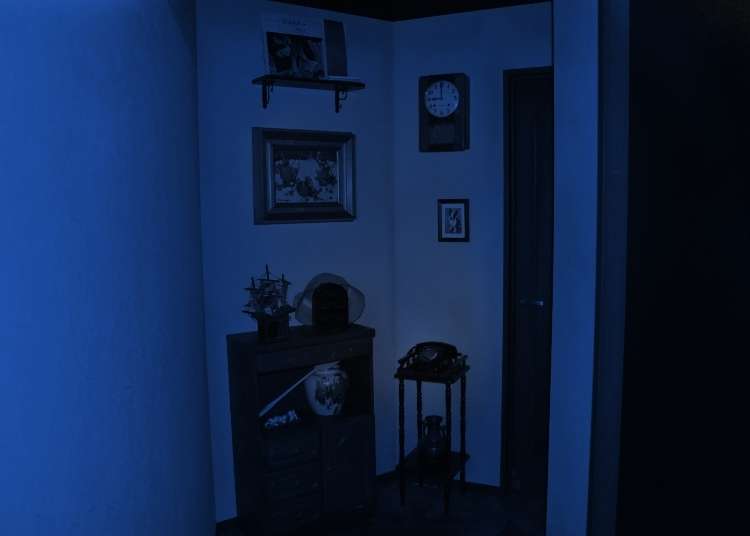
For many, mentioning summertime conjures up images of beaches, barbecues, fireworks and festivals – but in Japan, it is also known as a kind of “ghost season.” One reason for this is that summer is traditionally believed to be when ancestors’ spirits visit the land of the living during the festival of Obon, and families gather together to remember their deceased ones. In fact, in summer, when you visit an amusement park in Japan you might notice that one of the more popular attractions may be the haunted houses, where you can have some real hair-raising experiences.

Hirofumi Gomi is one of Japan’s legendary haunted house producers. For over 25 years, his job has literally been to go around the country and create unique horror house experiences to terrify anyone brave enough to go inside. Since 1992, he has been the main horror house producer for Tokyo Dome City Attractions, and while his productions are open all year round, every summer he produces a new special set with new stories. With the opening of this summer’s Onryou Zashiki haunted house we sat down with him to discover the secrets behind his work.
Meeting Japan's Horror Master
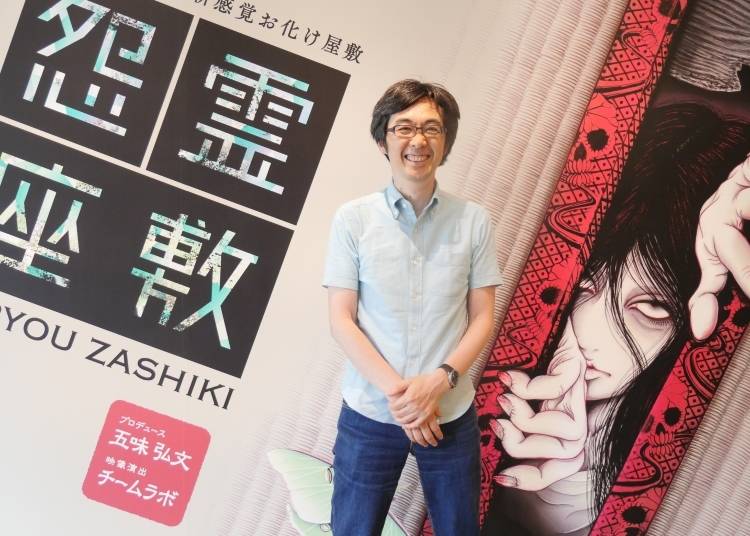
In person, Hirofumi was warm, friendly and energetic—almost like a schoolteacher—with hardly any hint whatsoever that he was a master of horror. He explained that from when he was a child he was interested in mystery and horror. He liked to share stories with his friends and over the years of his career he has found a strong focus in the haunted house production process, gravitating over theme, mission and story. In real life, for many of us, besides horror movies, the closest we come to being scared is when we have a nightmare, for example, but for Hirofumi nightmares don’t form the root of his work, rather he explains that he is inspired by things he discovers in daily life.
For example, he might see something which could be thought of as being a little bit creepy, and that sets him off on a path of thinking how that can be expanded on in order to scare others. In common with many Japanese horror movies he thinks that Japanese people are quite unnerved by something conventionally weak, like a child, becoming something quite terrifying, which contrasts quite strongly with Western horror which generally focuses on an unstoppable, but masculine, force. For Hirofumi this kind of horror is too obvious, and lacks the subtle terror that can come from something that should not be scary becoming scary. He is always thinking about how to create new story elements around superficially weak characters, characters that become terrifying as the result of betrayal and tragedy.
With the sheer number of horror movies and horror books out in the world it is easy to think that Hirofumi must be influenced by them somehow, but although he thinks that what he reads and sees does accumulate in his mind, he doesn’t consciously try to emulate particular scenes and stories.
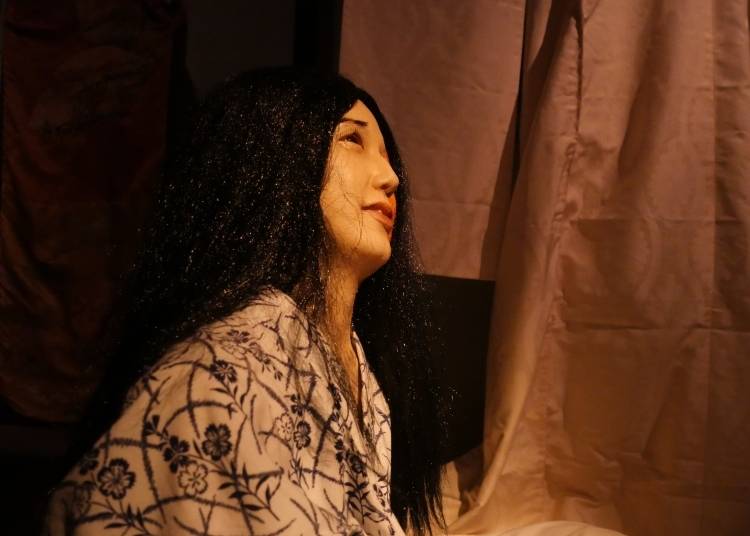
His latest production is in line with his previous horror houses where visitors have a mission in order to complete the experience. In terms of both Japanese and non-Japanese he thinks that this kind of concept is popular because the fear transcends culture. Across the world fun is fun, and scary is scary, so when Sadako, the character who kills anyone who watches a special tape in ‘The Ring,’ climbs out of the well, everyone is scared regardless of their nationality. At the same time though, it is fun and tickles the imagination – as a result people think it is interesting. And as entertainment it can be enjoyed.
In each of his creations, Hirofumi provides similar context and backstory for the audience to enjoy, together with the mission for guests to accomplish during their visit. Each set is produced with remarkable detail, sparking guests’ curiosities and imaginations, and leading them to build their own internal suspense.
From Suspense to Scares
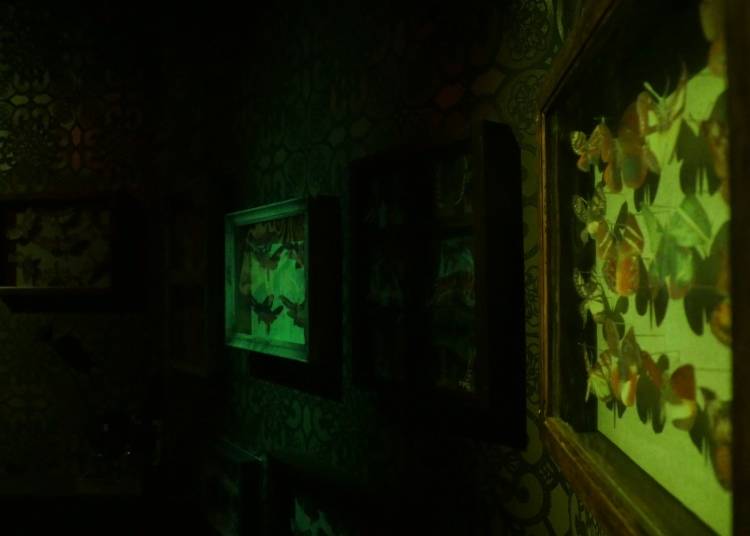
When Hirofumi created his first haunted house it was an intense learning experience. At the time he felt that he didn’t really understand what a haunted house was and that he didn’t really know much about them or how exactly to go about making people scared. He could kind of guess at what was a bit scary for people, and he always paid attention to how visitors reacted—so if they screamed at the right times when something scary occurred, then that was good. However, sometimes guests didn’t scream. He would then think about why they didn’t scream, and then used this to tweak the experience so that the next guests would definitely feel a thrilling atmosphere.
By taking this approach, Hirofumi could tease out how to dial in the creep factor so that it’s amply disturbing but not overpowering – in that butter zone of getting goosebumps and shivers but not freaking out. It is something that even today he is still learning. This is perhaps one of the more fascinating facets of his work flow: he doesn’t just make a haunted house and then consider it finished, he constantly tests how people react and makes changes accordingly, so even when it is open he is interested in whether people are screaming or not!
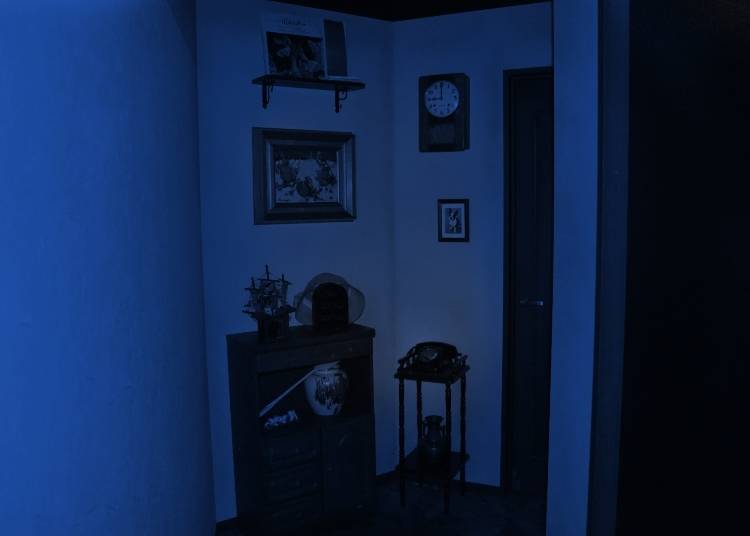
When he is first coming up with a new haunted house he starts with his own sample designs, which then are built upon by his team of professionals who make mannequins, can do the makeup, etc., as well as performers who can really pull off the scary atmosphere of the house.
A perfect example being his haunted house conducted in Luna Park in 1992, which was populated with performers from a theatrical troupe who could contort their bodies. Though, when it comes to casting for his productions he simply works with the people who want to be part of it, and then through training it becomes clear who should do which part. He is mainly looking for a cast which won’t hesitate or be troubled by the production itself: they have to be brave themselves.
For the visitors to his horror houses Hirofumi is aware of the different feelings constantly evolving within one’s mind. People feel happiness, sadness, anger, etc., but it is the fear that he wants to take hold of and as entertainment make it bigger.
Onryou Zashiki: Tokyo Dome City Attractions’ Newest Horror House
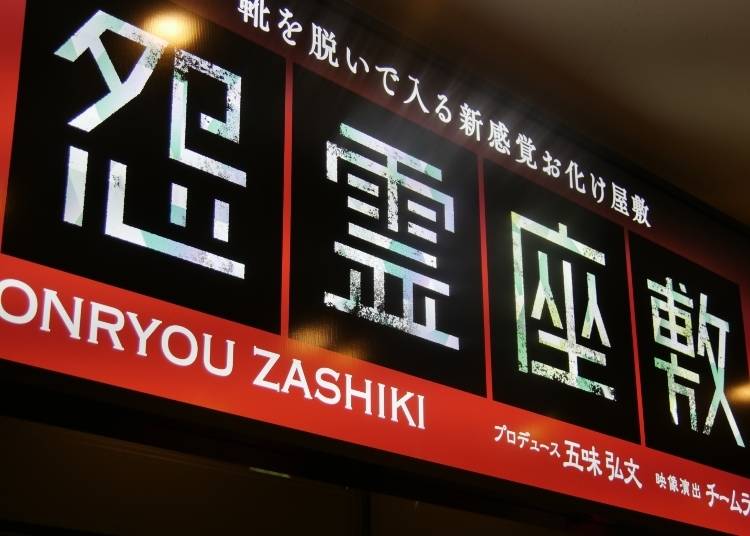
The newest of Hirofumi Gomi’s haunted house productions, Onryou Zashiki – which loosely translates into “home haunted with a vengeful spirit” – is offered in English, Chinese and Korean in addition to Japanese. In this experience, a gorgeous woman named Yoko will soon be getting married to her fiancé, whose hobby is collecting and framing moths. (Already kind of creepy.)
At his home, she is preparing a snow-white kimono for her wedding; one can picture her lost in a daydream of their approaching wedding day, dressed in her dream kimono as the groom gazes at her lovingly by her side. This moment is when her fiancé accidentally pricks his finger while attempting to pin a moth for display; in pain he drops the moth and it lands on the immaculate kimono. As Yoko’s fiancé moves to pick it up, drops of blood from his injured finger stain the wedding kimono.
With the perfect kimono spoiled, Yoko is quite upset with the ordeal – and after criticizing her fiancé for his carelessness, their relationship sours. He secretly starts seeing another woman. One day, this woman produces a special face powder which the fiancé brings to Yoko as a consolation gift. After using the powder, Yoko’s once-beautiful face becomes irritated and inflamed, disfiguring her.
When she returns to her fiancé’s home to ask about the powder, she is confronted by him and his lover who, with wicked smiles, are happy to tell her that the moth scale-containing powder was intended to have this effect. Consumed by anger, Yoko charges into the pair, who easily overpower her and begin beating her viciously until life spills from her body. The couple then bury Yoko’s corpse under the floor of the home, quickly sell the house and move away. From that day forward, those who move into the house would hear a female voice coming from somewhere beneath their feet.
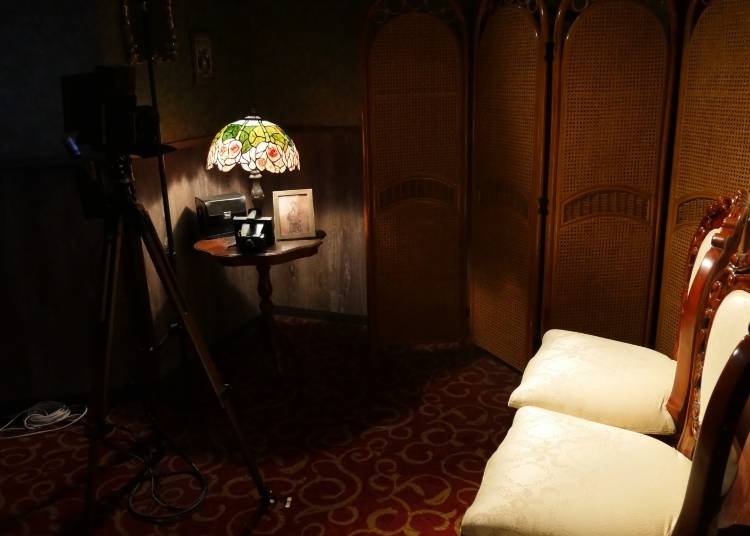
When we visited Onryou Zashiki, we found several foreign guests in line, each of who wanted to try out the Japanese take on horror. Seeing others exiting the attraction with screams, then shaking their adrenaline-amped bodies and chatting excitedly among each other, only added to the suspense. Our group (up to 4 people enter at a time) exchanged looks: what had we gotten ourselves into?
The experience sutures us directly to the scene. There are shoe lockers (free) at the entrance to the haunted house for footwear, and as in Japanese cultural tradition, we are directed to take off shoes before entering the home. After a brief introduction we understand that our mission is to console Yoko’s spirit by giving her medicine for her afflicted face. And with that, we are directed to a room that’s directly outside the home – complete with a doorbell. It’s night time. Dim. Ominous. Or are we just overthinking things?
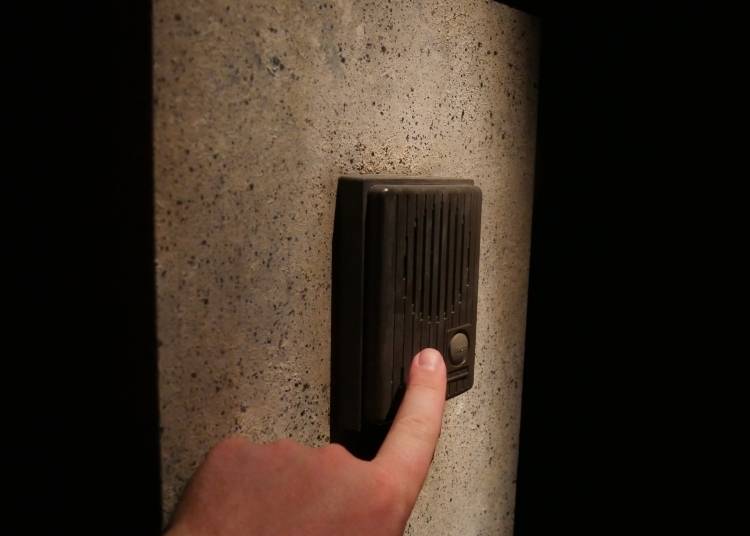
Ringing the doorbell, we hear a voice inviting us inside, beginning our travel through Yoko’s memories and experiences. It seems like such a normal start to a story that will take several twists before the time is done. Our mission would seem straightforward: locate medicine for Yoko and place it on her face to release her spirit from its grudge.
Onryou Zashiki has an appropriate creep factor that’s amplified by the fact that it takes place in a Japanese home – one that’s decorated with familiar but non-Western artifacts. As we progressed from room to room, we felt the convincing reality that we were walking through someone’s real home, but with that paranormal presence of a spirit that really did not want us there. It’s a marvelous mixture of emotion: one sympathizes with Yoko’s plight and feels sorrow for her condition. But can we soothe her spirit? Or will she confuse us for her fiancé and exact her revenge?
And from July 14 – September 24, 2018, horror house fans can enjoy the attraction in a whole new way with "Onryou Zashiki Extreme"! For beginners to the genre and others who might enjoy a good scream but not want nightmares, from 10 a.m. until 4 p.m., the experience is offered on a "normal" setting.
But as the sun sets and witching hour begins from 5 p.m. until 10 p.m. (9 p.m. in September), a special “hard” version of Onryou Zashiki Extreme is offered for those who are looking for a new lesson in true terror. (The ‘Onryou Zashiki’ version of the attraction will resume from September 24.)
-
Tokyo Dome City Attractions - LaQua Zone東京ドームシティアトラクションズ ラクーアゾーン
- Address 〒112-8575東京都文京区 後楽1-3-61 / 1-3-61, Koraku, Bunkyo-ku, Tokyo 112-8575, Japan
-
Nearest Station
- Korakuen Station (Tokyo Metro Marunouchi Line, Namboku Line)
- Suidobashi Station (Toei Mita Line)
- JR Suidobashi Station
- Phone Number 03-3817-6001
Location: Tokyo Dome City Attractions, LaQua Zone
Hours:
-Summer Special: 14 July - 24 September 2018
-Onryou Zashiki Extreme (normal version): 10 a.m. - 4 p.m.
-Onryou Zashiki Extreme (hard version): 5 p.m. - Closing
After 27 September:
-Onryou Zashiki: 10 a.m. - Closing
Price:
-1 Day Passport (unlimited rides): adults (18+), 3,900 yen; youths (12-17), 3,400 yen; children (6-11), 2,500 yen; infants (3-5), 1,500 yen
-Night Discount Pass (unlimited rides from 5 p.m.): Adults (18+), 2,900 yen; youths (12-17), 2,500 yen; children (6-11), 2,100 yen
-Ride 5 (Ticket to 5 attractions): 1 person (3 y.o. and above) 2,600 yen
-Per-person ticket for Onryou Zashiki: ‘Normal’ version, 820 yen; ‘Extreme’ version, 1,030 yen
Tickets can be purchased at the attractions ticket counter near the attractions gate or at LaQua Ticket Counter (first floor of the LaQua building).
(*Please note that the Night Discount Pass, 1 Day Passport, and Ride 5 cannot be used for “Onryou Zashiki Extreme" after 5 p.m. The 1 Day Passport and Ride 5 may be used until 5 p.m. however.)
*Prices and options mentioned are subject to change.
*Unless stated otherwise, all prices include tax.
Popular Tours & Activitiess
Recommended places for you
-

Best Things to Do and See Around Tokyo in September: Events and Festivals in Kanto
-
Ad

Ohta’s Isan Gets a Refresh: Introducing the New Ohta’s Isan S and Ohta’s Isan <Sachet> S with Updated Packaging and Improved Benefits
-

A Don Quijote Like No Other: Step Inside the All-New Tourist-Friendly Store at Shinjuku Tonanguchi Bekkan
by: Chehui Peh
-

10 Must-Buy Cosmetics at Don Quijote (2025 Edition)
-

(12% OFF KKday Coupon) Mt. Fuji Autumn Leaves, Powder Snow & More! 15 Best Tours to Experience Japan in Fall & Winter
-
Ad

Just 2 Hours from Tokyo! Enjoy Ibaraki’s Breathtaking Ocean Views, Flowers & Autumn Leaves on Private Tours
Inspiration for Accommodations
-

Enjoy Mt. Fuji from the Comfort of Your Room! Recommended Ryokan with Mt. Fuji View
-

Stay Near the Cherry Blossoms! Hotels for Cherry Blossom Viewing in Tokyo
-

Family-Friendly Hotels with Free Shuttle to Disneyland: Convenient Access for a Magical Stay
-

Top Ranked Hakone Hotels with Mt. Fuji View: Enjoy Stunning Scenery from Your Private Space
-

Convenient Tokyo Hotels with Airport Shuttle: Ideal for Families and Heavy Luggage
-

Stunning Tokyo Tower View Hotels: Enjoy Spectacular Scenery from Your Private Space
-

Convenient Asakusa Hotels with Kitchens: Ideal for Extended Family Visits
-

Experience Luxury: Hakone's 10 Best Five-Star Accommodations
-

Enjoy Mt. Fuji Autumn Leaves! Top Hotels Near the Popular Autumn Leaves Corridor
-

Experience Hakone Fall Foliage from Your Room with Stunning Views
-

Healthcare in Japan for Tourists: What to Do When You Get Sick or Injured in Japan
-

[MOVIE] “Your Name” Conquers Tokyo’s Winter – Discover the Wondrous Illuminations at Tokyo Michiterasu 2016
-

Japan Maid Cafes: Everything to Know Before You Go to a Maid Cafe in Japan!
-

Tokyo Station Top 10 Sweets Ranking!
-

Exploring Tokyo: 4 Must-Visit Spots around Tokyo Station
-

Lining up for 2 Hours?! 4 Reasons Japanese Are Obsessed With Pandas
by: Miyu Shimada
- #best ramen tokyo
- #what to buy in ameyoko
- #what to bring to japan
- #new years in tokyo
- #best izakaya shinjuku
- #things to do tokyo
- #japanese nail trends
- #what to do in odaiba
- #onsen tattoo friendly tokyo
- #daiso
- #best sushi ginza
- #japanese convenience store snacks
- #best yakiniku shibuya
- #japanese fashion culture
- #best japanese soft drinks


















